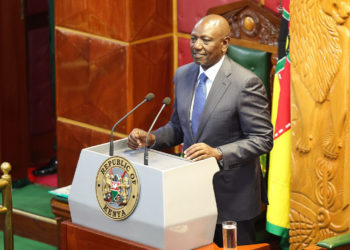The media landscape in Kenya finds itself at a critical juncture. While the industry has made significant strides in recent years, aided by the proliferation of digital technologies, it now faces major challenges that threaten its future relevance and sustainability. Without urgent reform and innovation, large swathes of the Kenyan media risk falling into obsolescence.
A key impediment lies in the presence of bureaucratic inertia within many established media houses. Layers of hierarchy and centralized decision-making structures hamper agility and lead to chronic delays in responding to audience needs and market trends. Unlike the past, rapidly evolving consumer preferences and the rise of digital upstarts require speed, creativity and risk-taking. But entrenched old-guard attitudes persist, bogging down innovation.
Senior gatekeepers in legacy media organizations are also prone to diluting bold ideas in order to minimize disruption to familiar business models and practices. There is an over-reliance on recycling tried-and-tested formats, even as these steadily decline in popularity. A cultural aversion to experimentation prevails, along with a short-term focus on immediate returns rather than long-term value creation.
These constraints have led to missed opportunities, especially in new digital media ventures. Established players were slow to embrace the disruption sparked by social media and user-generated content platforms. New entrants filled this vacuum with great success, capitalizing on changing habits among Kenyan media consumers.
Legacy media has been playing catch-up ever since, trying to replicate the nimbleness and innovation of these digital native competitors. But structural challenges persist, from rigid hierarchies to technology gaps to talent deficits in key frontier skills like data analytics. Outdated traditions also linger, like an excessive reliance on official sources that restricts diversity of voices and perspectives.
These disadvantages have steadily eroded the competitive edge of mainstream media. Falling readership of newspapers and declining viewership of television highlight the urgent need for reform. Audiences now expect seamless omni-channel content tailored to their interests and convenience. Media incumbents, however, remain stuck in rigid models centered around physical distribution of standardized content.
This widening gap is evident in the shift of advertising revenue to digital platforms. Younger demographics in particular now turn to social media influencers for information and entertainment. Kenyan media must re-invent itself to be platform agnostic, interactive and on-demand.
Otherwise, they face demise in the face of digitally savvy rivals. Already, established players have been forced to downsize and retrench as profits and market share dwindle.
To avoid obsolescence, Kenyan media needs a new ethos centered around the audience. This would require dismantling restrictive hierarchies to allow ideas to emerge from all levels. Teams must be empowered to experiment without fear of failure. Above all, there is an urgent need to recruit and groom talent with skills suited to the digital economy.
Rather than viewing emerging platforms as a threat, they can be leveraged to augment the reach of quality journalism. Flagship brands can provide curated content that engages communities fostered by user-generated content. Collaborations with independent creators can help strengthen connection with youth demographics. Data analytics is key to gaining audience insights in a fragmented media environment.
Make no mistake, reforming established media is no easy feat. But examples like The New York Times show that with visionary leadership and willingness to experiment it can be done. Reader revenues are now the Times’ largest income segment. It took difficult decisions to rationalize structures and operations, but the undertaking was necessary for its transition to a truly digital enterprise.
Kenyan media organizations face the same imperative before time runs out. With ambition, openness to change and keeping the audience at the core, they too can break free from rigidities and hierarchies. A mindset shift is needed – to be fearless in trying new formats, platforms and business models.
Otherwise, the future promises to be bleak. But the potential to leapfrog into a new era of sustainable, innovative and audience-centric Kenyan media remains. The choice is clear – reform or become relics overwhelmed by the tides of change.


















